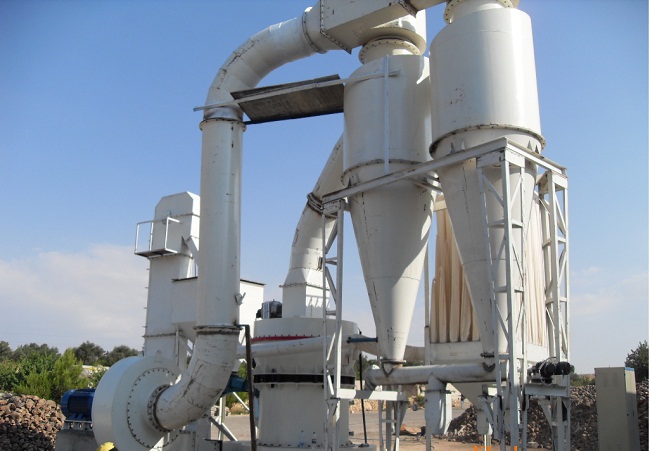- Insufficient Powder Output in Raymond Mill:
- Main Cause: Poor sealing of the powder locking device. In the grinding process, inadequate sealing of the powder locking device can lead to a phenomenon where powder is sucked back, resulting in either no powder output or insufficient output. Therefore, it is necessary to inspect the sealing of the powder locking device and adjust the sealing level.
- Excessive or Insufficient Powder Fineness:
- Issue: The analyzer is not functioning properly. The analyzer is responsible for analyzing the size of the finished powder, checking if it meets the product standards, and determining whether re-grinding is needed. When the blades of the analyzer are severely worn, the classification function is compromised, leading to either excessive or insufficient powder fineness. In such cases, replacing the blades can resolve the issue.
- Abnormal Powder Granularity:
- Cause: Improper adjustment of the wind speed in the Raymond mill. If the airflow in the Raymond mill is not properly adjusted, excessive airflow can result in abnormal powder output with coarser particles, while insufficient airflow can lead to finer powder output. In the absence of other abnormalities, adjusting the fan speed is necessary to correct the powder granularity.
- Powder Leakage at the Bottom of the Grinding Mill:
- Cause: Clearance between the main machine housing and the edge of the grinding disc. This can be addressed by designing a material recycling or blocking device, extending the distance between the outer edge of the bed and the outer edge of the grinding disc, or adding certain height of baffles.
- Excessive Vibration of the Fan:
- Causes: Accumulation of powder on fan blades, unbalanced wear, or loose foundation bolts. Excessive vibration in the fan can be rectified by cleaning the powder from the blades, replacing worn blades, and tightening foundation bolts.
In addition to addressing these common issues, certain precautions can be taken during operation to minimize faults. Specific methods include:
- Ensuring a normal working load and avoiding overloading.
- Proper lubrication: Selecting appropriate lubricants based on the type and application structure of the machinery, choosing the right quality grade according to machinery requirements, and selecting suitable lubricant brands based on the machinery’s working environment and different seasons.
- Regular inspection and maintenance: Regularly inspecting and maintaining the machinery to promptly identify operational issues and address temporary faults.
Raymond mills play a crucial role in the powder grinding industry, serving as the core of the entire grinding process. Ensuring the normal operation of equipment and stable output is of paramount importance to production enterprises. Therefore, proper maintenance and usage of Raymond mills should be prioritized.
